- Home
- Laptops
- Laptops Features
- Eight Reasons Why You Should Upgrade to Windows 10
Eight Reasons Why You Should Upgrade to Windows 10
By Manish Singh | Updated: 4 August 2015 14:05 IST
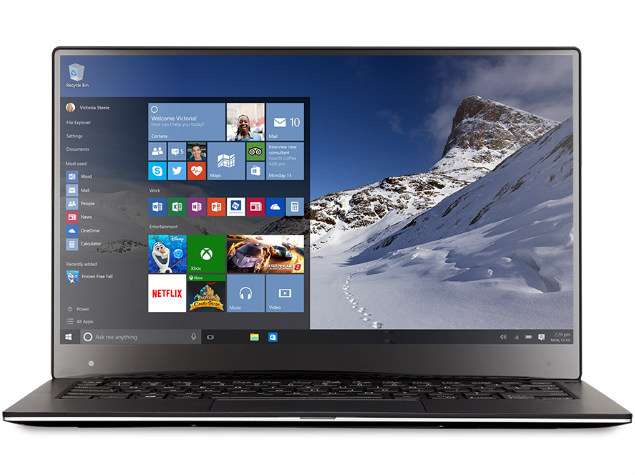
Advertisement
Unless you've been living under a rock for last few months, you're likely aware of the imminent release of Windows 10. Microsoft's latest desktop operating system will become available for upgrade/ purchase starting July 29. Not only is Windows 10 faster and more performance efficient, it also brings along a fleet of new exciting features. But if you're still not sure whether you should be making an upgrade later this week, here's a list of reasons that should convince you to jump ship when the day arrives. Windows 8 didn't turn out to be the success Microsoft was hoping for. It boasted a bold new Metro user interface (since renamed to Modern UI) which didn't sit well with the users. With Windows 10, Microsoft is undoing several of the things that didn't work in Windows 8, while also adding some amazing new features and security capabilities. Here are some that will excite you.1. Voice-based virtual assistant Cortana arrives on desktop platform
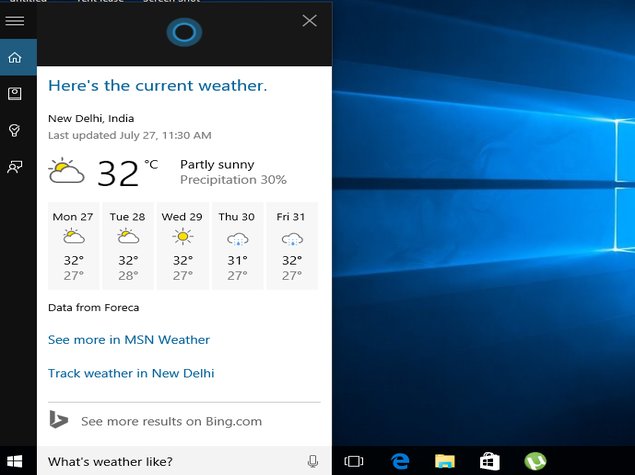
Formerly exclusively available on Windows Phone, Cortana is Microsoft's voice-based virtual assistant. Much like real life assistants, it will help you with your day-to-day activities. It sits right on the taskbar and on your instructions, and helps you find contextual information from the Web. Say you want to know the weather, you can count on Cortana for that. You want to know the traffic, it will not disappoint. It also feeds your appointments and other important tasks, and gives you a gentle reminder to make sure you don't show up late.But that's not the most exciting part. You can have Cortana help you write emails without ever clicking on your grumpish email client. You can dictate it what you want to write and who you want the email to be sent to, and consider the work done. Cortana also syncs with your mobile devices and gleans information from them to make sure it has everything covered. You don't need a Windows Phone to pair it with your computer as Cortana is arriving on Android and iOS operating systems later. In fact, an Android beta version of it got leaked earlier this month. 2. Start Menu is making a return
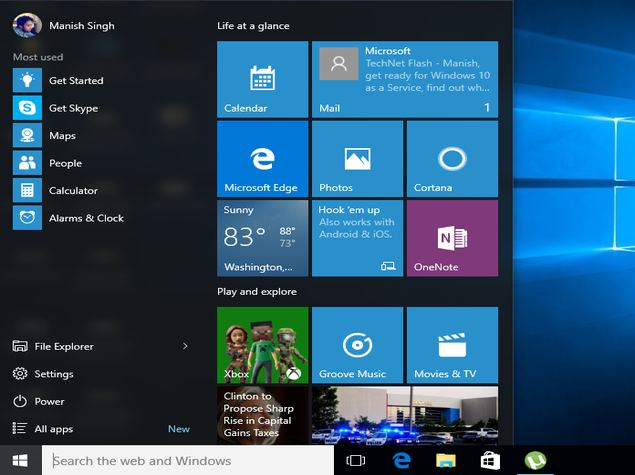
Microsoft clipped out Start Menu when it released Windows 8. The go-to menu for apps was replaced with Start Screen, which much like the Modern UI, was largely aimed at touchscreen capable devices. The uproar and outcry from users that began three years ago has led Microsoft to re-introduce this handy tool back to the desktop platform, but not without a revamp.The new Start Menu looks better, and also supports customisation - like the ability to resize Start Menu's window space. Another interesting feature is the addition of Live Tiles, which as you may remember from Windows Phone, is essentially a constantly updating large icons. It continues to retrieve feeds from its corresponding app. For instance, the icon for a weather app displays weather information without needing you to click on it.3. Because it's much more secure
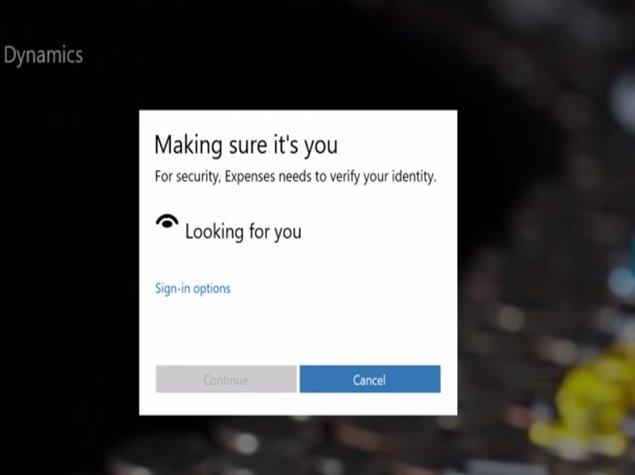
Windows 10, much like all its predecessors, brings new security advancements. A new facial recognition feature called Microsoft Hello, for instance, will let you log in to your computer without ever typing in your password. Microsoft Hello - using your computer's digital camera - recognises you and automatically completes the authentication process.But that's not all. In the new operating system, users also get Device Guard and Microsoft Passport features. Device Guard lets organisations lock down devices in a way that provides advanced malware protection against new and unknown malware. This feature is company's security measure against zero days, security vulnerabilities that aren't known to the vendor. Microsoft Passport is a tool for software developers to provide users with a more secure way of signing-in to a website or an app.4. Xbox games mirroring
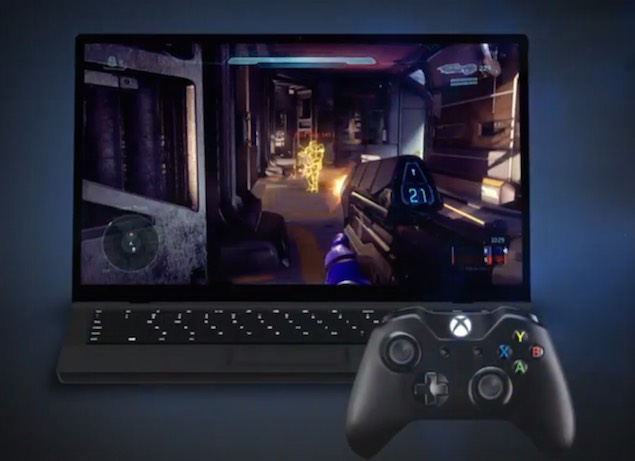
Windows 10 isn't only about productivity. The company is baking in a new capability to the desktop OS which will let users mirror their Xbox One titles and play it on their computer. Microsoft says that one can also set up multiplayer games from their PC against other players on Xbox. 5. Microsoft Edge
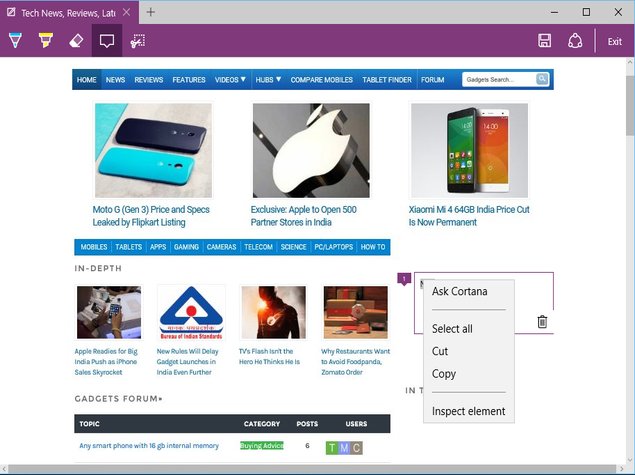
Windows 10 also marks the arrival of Edge, Microsoft's new desktop browser. Unlike Internet Explorer, the browser we all love to hate, Edge is surprisingly fast. Microsoft claims that Edge is faster than Chrome. In a blog post, it noted that Edge is 112 percent faster than Chrome on WebKit Sunspider benchmark; 37 percent faster on Apple's JetStream benchmarks; and 11 percent faster on Google's own Octane benchmarks.But speed isn't the only strong suite of Edge. It also lets you annotate webpages in real time, and then easily share notes and doodled pages with your friends. It also has deep integration with Cortana.6. Seamless transition between tablet and desktop mode
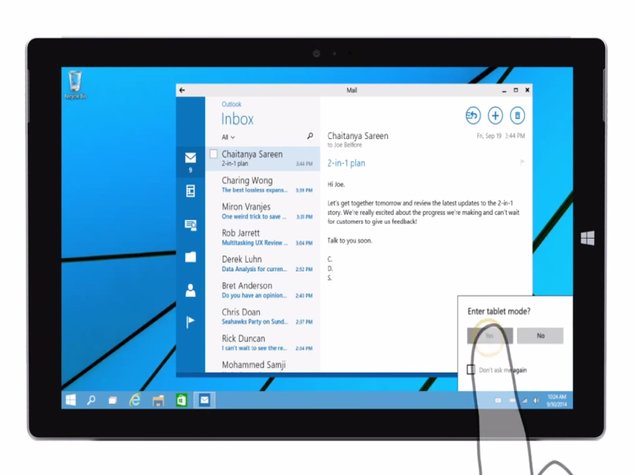
Addressing the growing tablet and 2-in-1 hybrid market, Microsoft is offering a feature called Continuum that lets users switch back and forth between the two different modes. As soon as one hinges the keyboard out of their hybrid machine, it automatically switches to the tablet mode - begins to support touch as the primary input.7. More productivity
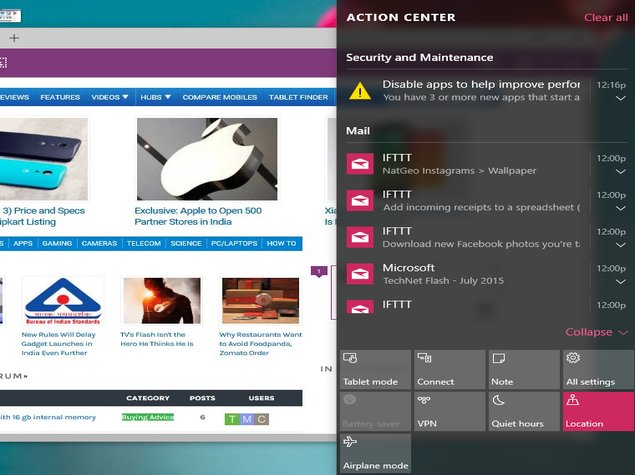
There are several more tools that users will find useful. Virtual Desktops, for instance, lets users organise their desktop in a much more efficient way. In a way, it overcomes the lack of second monitor for many. It allows users to create different virtual desktop spaces, that can be used to arrange similar work together. For instance, one can have different and separate virtual desktops for work, and non-work related activities.To add a new desktop, one only needs to click the Task View button on the taskbar, and click the "new desktop" button. The company says that there's no limitations to how many desktops one can create.Users will also like the Action Centre (Notification Hub) available on the right corner of task bar. It gleans notifications from every app and showcases all of them at one place. 8. It's free

There's no denying that a new operating system improves performance speed, and brings along more stability and security features. So even if you're not psyched about the new features, and the fresh paint job isn't cutting it for you, the fact that acquiring a copy of the new operating system won't cost you a dime should be deemed worthy of making an upgrade.Microsoft has already announced that Windows 7 and Windows 8.1 users will be able to upgrade to the new version of its desktop operating system for absolutely no sum of money. Even if you don't own a licensed copy of its Windows 7 (and up), you can experience Windows 10's pleasantries for free, as long as you have a Microsoft account (an email account with Outlook or Live, which is free to make).
Formerly exclusively available on Windows Phone, Cortana is Microsoft's voice-based virtual assistant. Much like real life assistants, it will help you with your day-to-day activities. It sits right on the taskbar and on your instructions, and helps you find contextual information from the Web. Say you want to know the weather, you can count on Cortana for that. You want to know the traffic, it will not disappoint. It also feeds your appointments and other important tasks, and gives you a gentle reminder to make sure you don't show up late.But that's not the most exciting part. You can have Cortana help you write emails without ever clicking on your grumpish email client. You can dictate it what you want to write and who you want the email to be sent to, and consider the work done. Cortana also syncs with your mobile devices and gleans information from them to make sure it has everything covered. You don't need a Windows Phone to pair it with your computer as Cortana is arriving on Android and iOS operating systems later. In fact, an Android beta version of it got leaked earlier this month. 2. Start Menu is making a return
Microsoft clipped out Start Menu when it released Windows 8. The go-to menu for apps was replaced with Start Screen, which much like the Modern UI, was largely aimed at touchscreen capable devices. The uproar and outcry from users that began three years ago has led Microsoft to re-introduce this handy tool back to the desktop platform, but not without a revamp.The new Start Menu looks better, and also supports customisation - like the ability to resize Start Menu's window space. Another interesting feature is the addition of Live Tiles, which as you may remember from Windows Phone, is essentially a constantly updating large icons. It continues to retrieve feeds from its corresponding app. For instance, the icon for a weather app displays weather information without needing you to click on it.3. Because it's much more secure
Windows 10, much like all its predecessors, brings new security advancements. A new facial recognition feature called Microsoft Hello, for instance, will let you log in to your computer without ever typing in your password. Microsoft Hello - using your computer's digital camera - recognises you and automatically completes the authentication process.But that's not all. In the new operating system, users also get Device Guard and Microsoft Passport features. Device Guard lets organisations lock down devices in a way that provides advanced malware protection against new and unknown malware. This feature is company's security measure against zero days, security vulnerabilities that aren't known to the vendor. Microsoft Passport is a tool for software developers to provide users with a more secure way of signing-in to a website or an app.4. Xbox games mirroring
Windows 10 isn't only about productivity. The company is baking in a new capability to the desktop OS which will let users mirror their Xbox One titles and play it on their computer. Microsoft says that one can also set up multiplayer games from their PC against other players on Xbox. 5. Microsoft Edge
Windows 10 also marks the arrival of Edge, Microsoft's new desktop browser. Unlike Internet Explorer, the browser we all love to hate, Edge is surprisingly fast. Microsoft claims that Edge is faster than Chrome. In a blog post, it noted that Edge is 112 percent faster than Chrome on WebKit Sunspider benchmark; 37 percent faster on Apple's JetStream benchmarks; and 11 percent faster on Google's own Octane benchmarks.But speed isn't the only strong suite of Edge. It also lets you annotate webpages in real time, and then easily share notes and doodled pages with your friends. It also has deep integration with Cortana.6. Seamless transition between tablet and desktop mode
Addressing the growing tablet and 2-in-1 hybrid market, Microsoft is offering a feature called Continuum that lets users switch back and forth between the two different modes. As soon as one hinges the keyboard out of their hybrid machine, it automatically switches to the tablet mode - begins to support touch as the primary input.7. More productivity
There are several more tools that users will find useful. Virtual Desktops, for instance, lets users organise their desktop in a much more efficient way. In a way, it overcomes the lack of second monitor for many. It allows users to create different virtual desktop spaces, that can be used to arrange similar work together. For instance, one can have different and separate virtual desktops for work, and non-work related activities.To add a new desktop, one only needs to click the Task View button on the taskbar, and click the "new desktop" button. The company says that there's no limitations to how many desktops one can create.Users will also like the Action Centre (Notification Hub) available on the right corner of task bar. It gleans notifications from every app and showcases all of them at one place. 8. It's free
There's no denying that a new operating system improves performance speed, and brings along more stability and security features. So even if you're not psyched about the new features, and the fresh paint job isn't cutting it for you, the fact that acquiring a copy of the new operating system won't cost you a dime should be deemed worthy of making an upgrade.Microsoft has already announced that Windows 7 and Windows 8.1 users will be able to upgrade to the new version of its desktop operating system for absolutely no sum of money. Even if you don't own a licensed copy of its Windows 7 (and up), you can experience Windows 10's pleasantries for free, as long as you have a Microsoft account (an email account with Outlook or Live, which is free to make).
Comments
For the latest tech news and reviews, follow Gadgets 360 on X, Facebook, WhatsApp, Threads and Google News. For the latest videos on gadgets and tech, subscribe to our YouTube channel. If you want to know everything about top influencers, follow our in-house Who'sThat360 on Instagram and YouTube.
Further reading:
Bing, Cortana, Cortana for Android, Microsoft, Microsoft Edge, Microsoft Hello, Start Menu, Windows 10, Windows 7, Windows 8, Windows 8.1
Related Stories
Popular on Gadgets
- Samsung Galaxy Unpacked 2025
- ChatGPT
- Redmi Note 14 Pro+
- iPhone 16
- Apple Vision Pro
- Oneplus 12
- OnePlus Nord CE 3 Lite 5G
- iPhone 13
- Xiaomi 14 Pro
- Oppo Find N3
- Tecno Spark Go (2023)
- Realme V30
- Best Phones Under 25000
- Samsung Galaxy S24 Series
- Cryptocurrency
- iQoo 12
- Samsung Galaxy S24 Ultra
- Giottus
- Samsung Galaxy Z Flip 5
- Apple 'Scary Fast'
- Housefull 5
- GoPro Hero 12 Black Review
- Invincible Season 2
- JioGlass
- HD Ready TV
- Laptop Under 50000
- Smartwatch Under 10000
- Latest Mobile Phones
- Compare Phones
Latest Gadgets
- Realme C73 5G
- Vivo S30 Pro Mini
- Vivo S30
- Realme Neo 7 Turbo
- Lava Bold N1 Pro
- Lava Bold N1
- Tecno Pova Curve 5G
- Motorola Edge 2025
- Acer Swift Neo
- Asus ExpertBook P3 (P3606)
- Vivo Pad 5
- Honor Pad 10
- Xiaomi Watch S4 15th Anniversary Edition
- iQOO Watch 5
- Haier 43 Inch QLED Ultra HD (4K) Smart TV (43H6E)
- Haier 55 Inch QLED Ultra HD (4K) Smart TV (55H6E)
- Asus ROG Ally
- Nintendo Switch Lite
- Haier 1.6 Ton 5 Star Inverter Split AC (HSU19G-MZAID5BN-INV)
- Haier 1.6 Ton 5 Star Inverter Split AC (HSU19G-MZAIM5BN-INV)
© Copyright Red Pixels Ventures Limited 2025. All rights reserved.
















